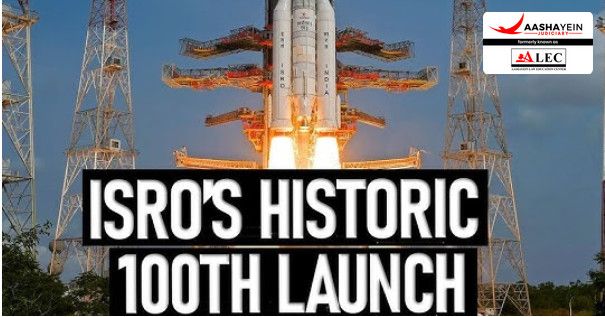In a remarkable achievement, the Indian Space Research Organisation (ISRO) marked a significant milestone by launching its second-generation navigation satellite, NVS-02, into orbit. This successful launch from the Satish Dhawan Space Centre in Sriharikota on January 24, 2024, not only marked the 100th launch of ISRO’s rockets but also underscored the nation’s growing prowess in space technology.
The Launch: A New Era for Navigation
The Geosynchronous Satellite Launch Vehicle (GSLV) rocket, which carried the NVS-02 satellite, lifted off at 6:23 AM local time. Approximately 19 minutes later, the rocket placed NVS-02 into a 322.93 km geosynchronous transfer orbit. This launch further demonstrated ISRO's ability to deliver complex space missions with precision.
The NVS-02 satellite is part of the second generation of India’s Navigation with Indian Constellation (NavIC) system. It will replace IRNSS-1E, ensuring better accuracy and reliability for navigation services in India and beyond. The satellite is equipped with both indigenous and procured atomic clocks, which will improve the precision of timing and position data – essential for critical applications such as navigation, timing services, and location-based services.
You can also read the latest judgment by visiting [Latest Judgment].
For more information, visit [Aashayein Enquiry Section]
What is NavIC?
NavIC (Navigation with Indian Constellation) is India’s homegrown satellite navigation system, similar to GPS, but focused on serving India and the surrounding regions. NavIC provides accurate location and time information to users in India and about 1,500 km beyond its borders.
This system is vital for applications like:
- Navigation: Helping people find their way on the ground, at sea, or in the air.
- Timing: Providing precise time for various industries, including telecommunications, defense, and finance.
- Emergency Services: Helping in search-and-rescue operations.
What’s Special About NVS-02?
The NVS-02 satellite is part of the second generation of NavIC satellites. It’s designed to replace an older satellite (IRNSS-1E) and bring improvements in accuracy. The satellite is equipped with atomic clocks, which help ensure precise timing. This is important because accurate time is crucial for navigation systems to work correctly.
The satellite carries signals in different frequency bands (L1, L5, and S-band), which allows for better coverage and more reliable navigation services. It also includes a Rubidium Atomic Frequency Standard (RAFS), an atomic clock, to ensure even better precision.
Why Does This Matter?
The launch of NVS-02 is a big deal for several reasons:
- Self-Reliance: India now has its own navigation system, reducing dependence on foreign systems like GPS. This is especially important for security and strategic purposes.
- Improved Services: With more satellites like NVS-02, NavIC will provide more accurate and reliable navigation services, which are crucial for various sectors like defense, agriculture, transportation, and emergency response.
- Global Recognition: India’s growing capabilities in space technology are becoming recognized globally, as more countries rely on satellite navigation systems.
What’s Next for NavIC?
ISRO plans to launch more second-generation satellites (like NVS-03, NVS-04, etc.) to keep improving NavIC. These new satellites will make the system even more reliable and accurate, ensuring that users across India and beyond continue to benefit from top-quality navigation services.
In short, the NVS-02 launch is a significant step forward in strengthening India’s space and navigation capabilities, and it will have a major impact on various industries, from defense to agriculture to everyday use of navigation apps.

